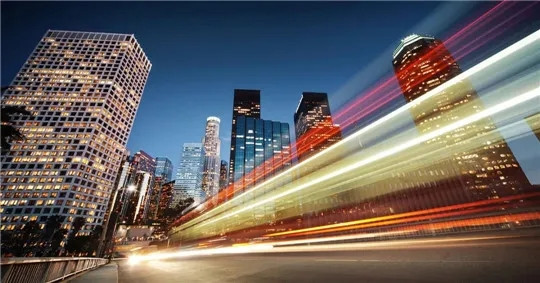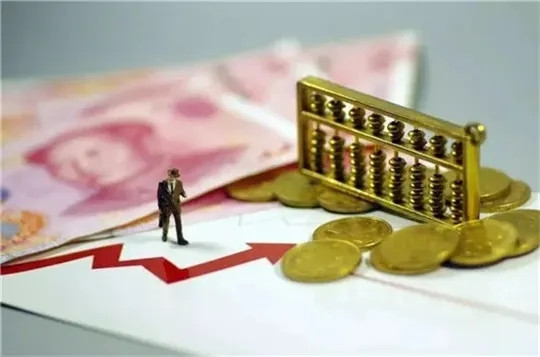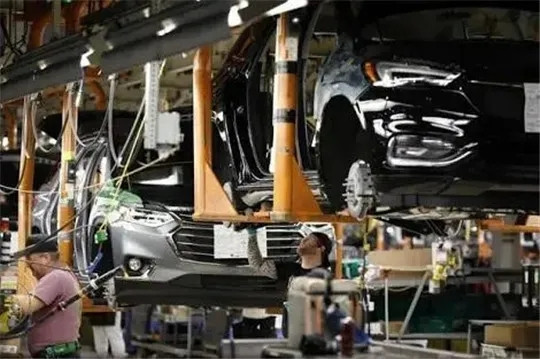At least the Chinese auto industry can see through the clouds through these four words.
"It is the common sense of the world that disasters always follow."
What looks like a philosophical moralizing sentence is not a famous quote, but a line from one Piece's popular character, Sauron, in episode 376. At a time when the two-factor culture is deeply rooted in young people's hearts, the restless atmosphere and the emerging pressure are entangled, such words may be more in tune with the current mood than classic proverbs, including the lingering clouds of the auto industry.

As early as November 2019 and March this year, we have seen a big inventory of wage cuts in the overseas and domestic auto industries respectively, including the widely circulated "14 auto companies cluster together to cut wages for themselves" form. The information available to the media is still the tip of the iceberg. The worse news is that not only the 14 auto companies in China and nearly 10 overseas companies have cut their wages, but also the extent and duration of the reduction exceed the media's expectations.
At the start of the second half of 2020, Ola Kallenius, head of Daimler, the world's largest luxury carmaker, dropped a bomb: the company and the entire car industry would continue to come under pressure in the face of coVID-19, Daimler would continue to cut wages and management at a faster rate than the average employee. At present the strongest performance of luxury car leaders are so planned, so other car companies can imagine.
At the same time, "Auto Commune" learned from the internal information channels, the vehicle enterprises and parts suppliers of personnel expenses compression, far from the "14 car companies clustered to reduce wages self-help" table can be included.

In the face of suffering and disaster, the constant cynicism and resentment can only play a temporary role in catharsis, it is more meaningful to do everything possible to find a way out. The automobile industry has suffered a heavy loss from the impact of the epidemic. The vertical comparison cannot compare with the past prosperous situation, but the horizontal comparison is fortunately, our country can still be relieved, and the subsequent opportunities in the industry will also be tilted towards local enterprises.
Of course, the wave will wash at the cost of pain, but the mechanism to remove the weak and strong will also allow the industry to be "tempered", which is the footprint of evolution.
Pay cuts and downsizing: More and longer than the hype suggests
Just when we thought the situation of COVID-19 was almost stable, nerves were once again strained by new cases in some provinces and cities. When wage cuts in the auto industry were once interpreted as "only for one month or quarter", undercurrents crept in again.

Speaking at an online meeting with the IG Metall union on July 1, Daimler CHIEF Executive Erik Konlinson said that Daimler and the automobile industry were still facing severe downward economic pressure from coVID-19 and had to "take the knife" to themselves. In his view, the "flesh-cutting restructuring" that carmakers are about to embark on is far more painful than the pre-outbreak plans.
To implement specific detailed measures, the simplest operation is to reduce wages and layoffs. Mr Konlinson warned that a "very difficult situation" would necessate "substantial pay cuts" and that Daimler management would suffer more than ordinary employees. Such adjustments are necessary to protect the company's finances and ensure a huge investment in future new technologies.
And the industry is more concerned about the Chinese auto companies to cut wages and lay off staff, is generally focused on the "14 auto companies cluster to cut wages for themselves" form body.

From the reduction of base salary by 25% and the cancellation of double salary for the management of SAIC-Volkswagen and SAIC-GM, to the substantial reduction of performance or overall salary by the autonomous automobile companies such as JMC Holding and BAIC, to the delay or reduction of employee salary by the new automobile manufacturing forces such as Weimar, and even the non-payment of unpaid wages by Borjun Beiteng, it is a huge tragedy.
But what Auto Commune has learned is that the 14 auto companies are far from alone in laying off workers and cutting wages, and that the situation of parts suppliers and dealers is no easier than that of oEMS.
For example, an insider of a car company in Chongqing, which considers both domestic joint ventures and new forces, told Auto Commune that the salary of the management above grade 9 has been greatly affected, while ordinary employees have not yet been affected. Working from home in February, so management didn't get paid.
Some auto companies that say they will not cut wages are doing so in a disguised way, and some of the wage cuts reported are actually earlier than disclosed. According to employees, saIC-GM-Wuling managers and above receive 30% discount, and front-line employees' performance pay is reduced by 30%. Byd's commercial vehicle business group will stop distributing 33 percent of its performance starting in 2019, instead of starting in March this year, as reported by media.

Wage cuts at parts suppliers are not limited to multinational giants such as Delphi and Ambofo. A car navigation production related enterprise employees, according to the company for six months in a row, has stopped recruiting new employees, though no formal wage cuts, but is not expected annual pay increases, and layoffs leave duty personnel allocation to double the scale of the project team to shrink by less than half, 9126 is the norm, have done very tired but also difficult to move ".
One joke: If you think the Chinese auto industry is depressed, you can take some comfort from looking at the world. In fact, pay cuts at Daimler and other global giants were not new at the end of last year.
In November 2019, Daimler announced that it would lay off more than 10,000 employees and cut 1.4 billion euros of manpower expenditure by 2022. Lay off another 10,000 employees by 2025. In other words, the widely circulated claim that "Daimler is cutting 10,000 or 15,000 jobs" is not quite accurate. In fact, it is cutting 20,000 jobs in two batches, or about 1/15 of the total workforce (Daimler's global workforce was 299,000 at the end of 2019).

Daimler, let alone any other carmaker, has to raise its knife to itself.
If you add up all the news of wage cuts in recent months, the overall scale of job cuts would be the biggest in Europe:
· Audi: Lay off 9,500 employees by 2025, accounting for about 10% of the total workforce;
· BMW: Cut 6,000 full-time jobs, 10,000 temporary workers, slash bonuses, extend working hours of some employees, and strive to save 12 billion euros in costs by 2022;
· Volkswagen: the salary of 18,000 middle managers will be reduced by 10% this year and by 10%-20% in the next two years;
· PSA: in April and May, about 90% of its employees worldwide were on leave or partially unemployed;
· Renault: Cut 15,000 jobs, 4,000 of them in France, sell the headquarters building;
· Volvo: 750 jobs in Sweden in 2019;
· JAGUAR Land Rover: nearly half of the global employees are temporarily suspended, the salary of the leadership team is delayed for three months, 30% of CEO Shwade's salary is suspended, 20% of other board members and 10% of executive management, and the company promises to pay them by the end of the year;
...
At U.S. automakers, which have been relatively weak in China, the job cuts were announced earlier than at their European peers:
· Ford: Announced layoffs of 7,000 and 12,000 employees in May and June 2019, respectively, by the end of 2020. 20% to 50% of the salaries of the company's top 300 global executives will be deferred for at least five months, including 50% for CEO Jim Hackett and COO Jim Farley.
· GM: Announced to lay off 14,700 employees at the end of 2018, so the cuts in 2019 and 2020 are not large. Its Cruise Autonomous subsidiary recently announced to lay off employees. In March, it announced to delay the payment of about 20% of the salaries of more than 69,000 permanent employees worldwide, but will pay back and pay interest before March 2021;
· Fiat Chrysler FCA: It laid off 1,500 workers in Canada last year and 2,000 temporary workers in the U.S. this year. Most salaried employees worldwide are delaying their pay by 20 percent for three months.
· Tesla: It plans to temporarily reduce its salary by up to 30% during the epidemic, with a gradient of salary reduction. The largest reduction is for vice presidents and above, followed by 20% for directors and 10% for ordinary employees. Last year, it announced 3,000 layoffs.
Japanese and Korean automakers are not immune:
· Nissan: Cut 12,500 jobs worldwide, paid 80% of wages during the shutdown of its U.S. plants, laid off about 10,000 U.S. employees temporarily in April, and laid off 6,000 in the U.K. and 3,000 in Barcelona, Spain;
· Honda: laid off about 14,400 employees in the United States by May 1 and supported them through government unemployment benefits. Last year, it laid off 3,500 workers in the United Kingdom.
· Hyundai: About 1,200 executives of its 50 subsidiaries took a collective pay cut, and the boss, Cheng Yi-suen, took a 20% pay cut. Last year, it was announced that 10,000 employees would be laid off and 20% would be laid off by 2025;
...
What does adversity take to build confidence?
If the Chinese auto industry wants to find the light from the haze and explore the way out from the confusion, then it is the right choice to compare and analyze the situation in China and overseas.

It's not schadenfreude, it's not standing up, it's not trying to "beat the shit out of me" for comfort, it's helping the industry think clearly and see the road ahead. The global situation of the epidemic is precisely the background conditions for the future development prospects of the automobile and other industries. You may scoff at Bismarck's heroic assertion that "if there were no obstacles in the way of life, what would man do?" but you have to give rational assent to the reality of the situation.
Although the reappearance of cases in some provinces and cities in China has overshadowed the glory of the "victory over the epidemic", the situation is far better than most powerful manufacturing countries in terms of quantitative analysis. On July 1, 50,000 new cases were confirmed in the United States, a single-day high, and more than 10 million cases have been confirmed worldwide. More than half a million people have died. Although the cumulative number of confirmed cases in China has increased intermittently, it is relatively sporadic, showing single-digit or double-digit absolute value. There is no doubt that China is the best or even the first country in the fight against the epidemic.

In the long run, then, China's auto industry is also in a good position. There is an "earthquake effect" in both capital and industry, as crustal movements that make one area sag into a depression may raise another to a peak.
From the perspective of capital, the profit-seeking feature will make it flow into A more favorable direction, just as a-shares were promoted during the epidemic period. After all, there is no other better direction for capital. If other countries falter, China may just attract more investment. In this sense, opportunities for the domestic economy in the second half of the year, combined with new infrastructure spending just announced by the government, are expected to boost the economy.
And the supply-chain perspective has a seismic effect: China's auto industry is extremely difficult to displace globally, not least because of the size of the 25 to 30 million vehicles sold annually. While 80 per cent of the world's components are produced in China, according to 2019 figures from the General Administration of Customs, China's auto parts companies exported more than $60bn last year, with foreign subsidiaries accounting for 40 per cent of exports.

Import substitution from Southeast Asia? Capacity transfer? Neither the short nor the long term is easy. If it is a short-term response to an emergency, such as the shutdown of wiring harness and brake supply in Hubei province, it has already reduced the output of overseas factories of global automobile enterprises, but brake production requires large specialized mixing equipment and special castings, which is difficult to transfer. If it is a long-term migration of capacity, it is likely to end up moving only the assembly links at the end of the value chain, while the entire supply chain remains heavily dependent on China, as Is the case with Vietnam's mobile phone capacity, where imports of components from China remain high, leading to a long-term trade deficit.
On the one hand, some overseas auto companies will rely more on Chinese components, on the other hand, the local auto companies will also enhance the role of local procurement. "We have 208 suppliers and 2,173 parts, currently in 23 overseas countries and regions." Yuan Mingxue, executive vice President of Changan, previously told the media: "We may have to make two preparations for parts, especially core parts, importing from overseas on the one hand and supporting key domestic enterprises and key parts suppliers on the other."
After the outbreak, bus suspended will strengthen consumer's awareness of the needs of private cars, under "to avoid the danger zone" of consciousness, move freely travel will appear more prominent, so the outbreak population to purchase cars play a role, and China is one of important reasons for the purchase of the car falling demand silence.
Policy support is already on the way: A series of cities, represented by Foshan, have launched policies to stimulate car consumption; On February 16, qiushi issued the highest speech to encourage the appropriate increase of automobile license plate quota in areas where automobile purchase is restricted, so as to promote the consumption of automobiles and related products. Take eight cities with purchase restrictions for example, the retail sales of passenger cars in 2019 totaled 2.8965 million. If all of them can be relaxed, it is expected to release 20% or 580,000 new demand for passenger cars.
If there is any doubt about the upturn in sales, let alone the upturn in the overall car market in April (which includes commercial vehicles) and in May for passenger cars, the overall trend can be seen in macro figures such as electricity consumption and auto industry sales. Electricity consumption figures, a barometer of manufacturing activity, showed that domestic output in May rose 4.3% from a year earlier to 593.2 billion kilowatt-hours, with growth accelerating to 9.1% in early June. Auto sales rose 6.0 per cent in May and profits rose 3.7 per cent, according to the National Bureau of Statistics.

Nassim Nicholas Taleb, in his book Anti-Vulnerability, said: Black swan event will happen, only strong anti-vulnerability enterprises will survive. It is true that a large number of vehicle enterprises, parts suppliers and dealers will fall under the impact of the epidemic and the downturn in the industry. However, this is not necessarily a bad thing. On the contrary, it can weaken and stay strong, and sweep away the old branches and leaves.
Bai Teng, Bo county fell, Zotye, Lifan is also further from the curtain call. These auto companies in the past glory, diverged the resources of the industry and the demand of the market, and the cold winter made it finally wither, once the cloud opens, the cake of the whole market will be completely owned by the auto companies.
As Bacon said, luck is not without fear and trouble; Doom is by no means without comfort and hope. The impact of each disaster, in the national transport and industry drawing board, is not a monotonous downward curve. Misfortune adds trauma and palpitations in the short term, while in the long term it brings dialectical reversal and shuffling, which can be a blessing in disguise. This time, COVID-19 is no different.

Romain Rolland once wrote: a misty morning is not a cloudy day. Trauma is the best thing life has to offer, because each trauma marks a step forward.
Don't ask what to hold, when you can also have the strength to ask questions, questions, anger, it means that if you take all the strength to break free of difficulties, it is more than others a point near the hope of victory
AMS2024 Exhibition Guide | Comprehensive Exhibition Guide, Don't Miss the Exciting Events Online and Offline
Notice on Holding the Rui'an Promotion Conference for the 2025 China (Rui'an) International Automobile and Motorcycle Parts Exhibition
On September 5th, we invite you to join us at the Wenzhou Auto Parts Exhibition on a journey to trace the origin of the Auto Parts City, as per the invitation from the purchaser!
Hot Booking | AAPEX 2024- Professional Exhibition Channel for Entering the North American Auto Parts Market
The wind is just right, Qianchuan Hui! Looking forward to working with you at the 2024 Wenzhou Auto Parts Exhibition and composing a new chapter!
Live up to Shaohua | Wenzhou Auto Parts Exhibition, these wonderful moments are worth remembering!
Free support line!
Email Support!
Working Days/Hours!





